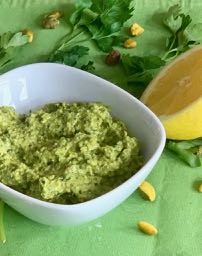Friday, August 17, 2012
 Who doesn’t love Mexican food?
Who doesn’t love Mexican food?
No, really, is there anyone, anyone at all that can’t resist nachos, chips and guacamole, burritos, tacos, margaritas, and the like? I certainly can’t. I love it. While not a regular part of my dinner repertoire, I always keep (homemade) burritos on hand in freezer for a quick supper. And once in awhile, when the mood strikes, I make fajitas.
Tasty Thursday Night Fajitas (But it’s No Fiesta)
Yesterday’s fajitas were simpler than many I’ve made, mainly because I didn’t take the time to whip up a salsa to accompany the dish. (That’s because I was at the gym, actually.) Usually I’d prepare a salsa fresco (simple tomato salsa) or roasted tomatillo salsa to go with. Rather, all I used yesterday was a garnish of chopped avocado and a scatter of cotija cheese, both of which I had on hand. (The cotija cheese was leftover from my Spanish grilled corn.) I didn’t use sour cream, either—though I often do. Thus, this dish was more of a light summer weeknight dinner rather than a full-out Mexican fiesta with all the trimmings as I might prepare for a party.
I was nicely surprised to say that I really didn’t miss all of the trimmings—not that they aren’t delicious additions. So if you’re watching your waistline this is a lovely fajita dish to fulfill your Mexican craving in a lower-calorie fashion. I wouldn’t be lying if I were to tell you that in part while I passed on the sour cream was due to my increased energy intake this week due to the luscious chocolate zucchini bread in my home.
I told you I had very little will power.
On that note, I return now to the savory side of zucchini with my recipe for summer vegetable fajitas.
1. Chop. I used peppers and onions, which are traditional, but also included zucchini and yellow squash to celebrate these abundant summer vegetables; all were local, organic produce from the farmers’ market.

2. Marinate. Make the marinade: whisk together 3/4 bottle beer, fresh lime juice from 1 lime, 2-3 tbsp canola oil, 1/2 tsp cumin, 1/4 tsp cayenne, 2 cloves crushed garlic, and 1/4 cup cilantro, and a tiny squirt of agave nectar (optional). Season with black pepper and a pinch of salt. Pour over the veggies and toss to coat (they do not need to be submerged). Periodically toss them every 10 minutes or so for 30-40 minutes total to ensure the produce is, er, marinating, as it is this mixture that provides the fajita flavor.

3. Cook. Heat canola or olive oil to high, then place the vegetables in the pan. Do not add the liquid, else you’ll steam the veggies rather than char them. Let them sit a few minutes (~5), until they begin to caramelize, getting somewhat black; toss and repeat. Don’t continually stir them otherwise the charring won’t develop. They should, in fact, be sizzling. When the vegetables are just about done, pour in some of the marinade to almost cover the vegetables, which will immediately boil vigorously: the goal is for all of the liquid to evaporate and impart more fajita flavor into the dish at this final stage of cooking.

4. Fill. Place filling in warmed tortilla shells and garnish as desired. I use whole grain, of course; so much healthier than refined grain.

What else to say? Nothing, really, but to reiterate that I really have hosted many dinner parties where I serve fajitas with all the traditional accompaniments: guacamole, three salsas (fresco, tomatillo, and corn), grated cheddar cheese, sour cream, chopped cilantro, and diced onions. Indeed, part of the fun of eating fajitas is putting out a spread and letting everyone make them up as they like. (With sangria and margatinis flowing, of course.) But I was truly delighted with this lighter version, which took far less time to prepare and was definitely lighter on calories.
And they really were perfect for a weeknight dinner.





But … what did you do with the other 1/4 bottle of the beer??
Hee. Someone who gets me. Er … um… it was put to excellent use. 😉 Thanks for writing!